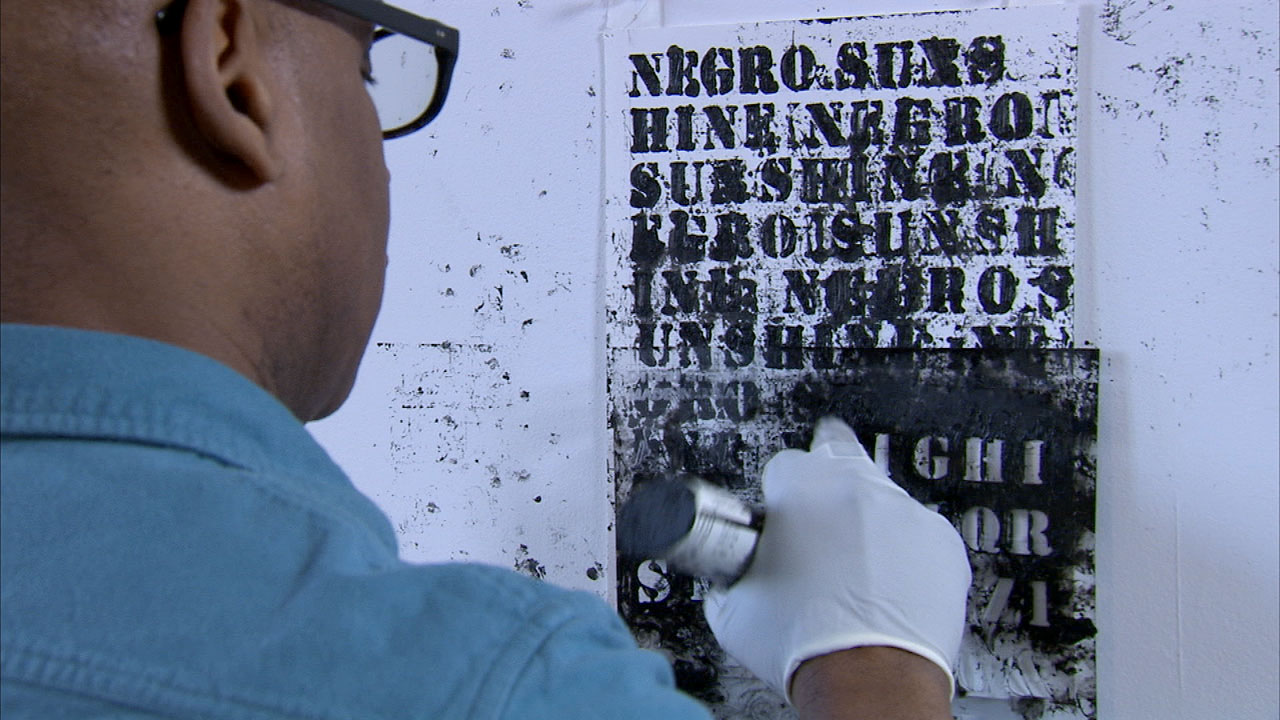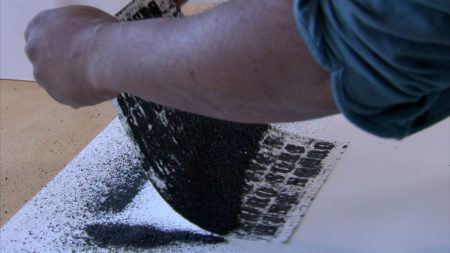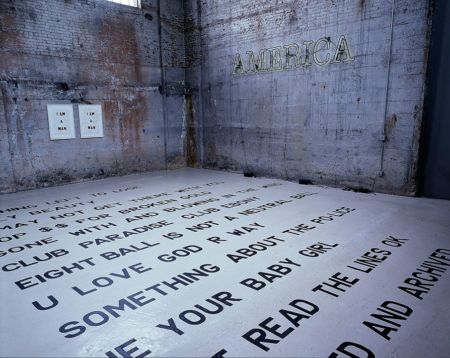Glenn Ligon

Glenn Ligon was born in the Bronx, New York, in 1960. Ligon’s paintings and sculptures examine cultural and social identity through found sources—literature, Afrocentric coloring books, photographs—to reveal the ways in which the history of slavery, the civil rights movement, and sexual politics inform our understanding of American society. Ligon appropriates texts from a variety of literary writers including Walt Whitman, Zora Neal Hurston, Gertrude Stein, James Baldwin, and Ralph Ellison, as well from more popular sources such as the comedian Richard Pryor.
In Ligon’s paintings, the instability of his medium—oil crayon used with letter stencils—transforms the texts he quotes, making them abstract, difficult to read, and layered in meaning, much like the subject matter that he appropriates. In other works that feature silkscreen, neon, and photography, Ligon threads his own image and autobiography into symbols that speak to collective experiences. “It’s not about me,” he says. “It’s about we.”
Glenn Ligon received a BA from Wesleyan University (1982) and attended the Whitney Museum Independent Study Program (1985). He has received numerous awards, including the United States Artists Fellowship (2010); Joyce Alexander Wein Artist Prize from the Studio Museum in Harlem (2009); Skowhegan Medal for Painting (2006); John Simon Guggenheim Memorial Foundation Fellowship (2003); Joan Mitchell Foundation Grant (1998); and Visual Artist Fellowships from the National Endowment for the Arts (1989, 1991). His works are in the public collections of the Los Angeles County Museum of Art; Museum of Contemporary Art, Chicago; Museum of Modern Art, New York; Philadelphia Museum of Art; San Francisco Museum of Modern Art; Solomon R. Guggenheim Museum; Tate Modern; Walker Art Center; and the Whitney Museum of American Art, New York, among others. Glenn Ligon lives and works in New York City.
Links:
Artist’s website
Videos 4
Read
Galleries
“Like any artwork, things become richer if you know more about them but I don’t think that’s crucial.”
Glenn Ligon





